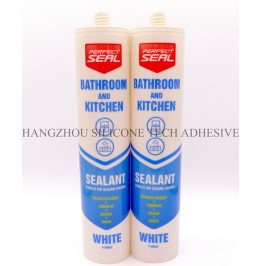Sealant serves as a critical barrier against moisture, dust, and air infiltration in joints across construction, automotive, and industrial settings. However, even well-applied sealant can experience partial detachment over time due to environmental stress, movement, or aging. Addressing these issues promptly prevents further degradation and costly repairs. Understanding the optimal timing for partial sealant repairs ensures long-term durability and performance.

Certain indicators of partial sealant detachment demand immediate attention to prevent secondary damage. Recognizing these signs early minimizes the risk of structural or functional failures.
When sealant pulls away from the substrate, even slightly, it creates gaps that compromise its waterproofing ability. These gaps often appear as thin lines or widening cracks, especially in corners or joints subjected to frequent movement. For example, a partially detached seal around a window frame may allow rainwater to seep into walls, leading to mold or rot. Inspecting joints monthly for such gaps ensures timely intervention.
Sealant that feels tacky, mushy, or has changed color—such as yellowing in clear varieties—often signals chemical breakdown or mold growth. Softened sealant loses its adhesive properties, making it prone to further detachment under stress. Discoloration may also indicate UV degradation or exposure to harsh cleaning agents. Areas exposed to direct sunlight or high humidity, like bathroom joints, should be checked weekly for these changes.
The surrounding environment plays a significant role in determining how quickly partial sealant detachment escalates. Adjusting repair schedules based on these factors prevents minor issues from becoming major problems.
In areas with consistent moisture exposure, such as bathrooms, kitchens, or outdoor joints, partially detached sealant acts as a conduit for water infiltration. Humidity accelerates mold growth and weakens adhesive bonds, causing rapid deterioration. For instance, a small gap in a shower sealant can lead to water pooling beneath tiles within days. Repairing such areas immediately after detection prevents structural damage and health hazards from mold.
Sealant expands and contracts with temperature changes, a process known as thermal cycling. In regions with extreme seasonal shifts, like cold winters and hot summers, repeated expansion can widen existing gaps. Partial detachment in these climates often worsens during freeze-thaw cycles, where trapped water expands as it freezes. Inspecting sealant joints at the start of each season—spring and fall—allows for proactive repairs before thermal stress causes irreversible damage.
Joints subjected to frequent movement, such as those in floors, walls, or automotive components, require closer monitoring for partial sealant failure.
Buildings or vehicles that experience settling, vibration, or repeated impact can stress sealant joints. For example, a partially detached seal around a door frame in a high-traffic area may worsen with daily use, leading to air leaks or noise infiltration. Similarly, automotive sealant near engine compartments may detach due to constant vibration. Repairing these areas promptly after noticing movement-related gaps prevents further loosening and ensures continued functionality.
When sealant bonds dissimilar materials—such as glass to metal or concrete to wood—differential movement can cause partial detachment. Flexible substrates, like rubber gaskets, may compress over time, pulling away from rigid counterparts. In contrast, rigid materials like tile may shift due to foundation settling. Identifying these interactions during routine inspections helps prioritize repairs in joints where movement is inevitable, ensuring the sealant adapts without failing.
Before addressing partial sealant detachment, a thorough assessment ensures the repair is effective and long-lasting.
Use a non-abrasive tool, such as a plastic scraper or soft brush, to gently remove any detached or crumbling sealant. Avoid metal tools that may scratch the substrate. After removal, clean the area with a mild detergent and water to eliminate dirt, grease, or mold. Allow the surface to dry completely, as moisture trapped beneath new sealant can cause future detachment.
Determine whether the partial detachment is isolated or part of a larger failure pattern. Small, localized gaps may only require spot repairs, while widespread detachment suggests the need for full resealing. Check adjacent joints for signs of stress, such as cracking or discoloration, which may indicate underlying issues like substrate movement or improper initial application.
Proactive measures reduce the likelihood of partial sealant detachment in the future, extending the lifespan of repairs.
Schedule quarterly inspections of high-risk areas, such as joints near plumbing fixtures, windows, or doors. During these checks, look for early signs of detachment, like minor gaps or surface irregularities. Applying a thin layer of compatible sealant over small cracks can reinforce the joint without full replacement. This approach, known as “topping off,” prevents minor issues from escalating.
Mitigate environmental factors that contribute to sealant failure. In humid areas, use dehumidifiers or improve ventilation to reduce moisture buildup. For joints exposed to UV light, consider applying a UV-resistant coating or selecting sealants formulated for outdoor use. In regions with temperature extremes, choose sealants with high flexibility and thermal stability to accommodate movement without detaching.
By addressing partial sealant detachment at the right time and under the right conditions, property owners and maintenance teams can preserve the integrity of joints and avoid costly repairs. Combining immediate action with long-term preventive strategies ensures sealant remains effective in protecting structures and surfaces.
Copyright 2019 by Hangzhou Silicone Tech Adhesive Co., Ltd. All rights reserved.
Bathroom Sealant | Acrylic Sealant | Dow Corning 795 | Aquarium Sealant | Dow Corning 732 | Clear Silicone Sealant | Polysulfide Sealant | Glazing Sealant | Mirror Sealant | IG Sealant
Powered by Onepound